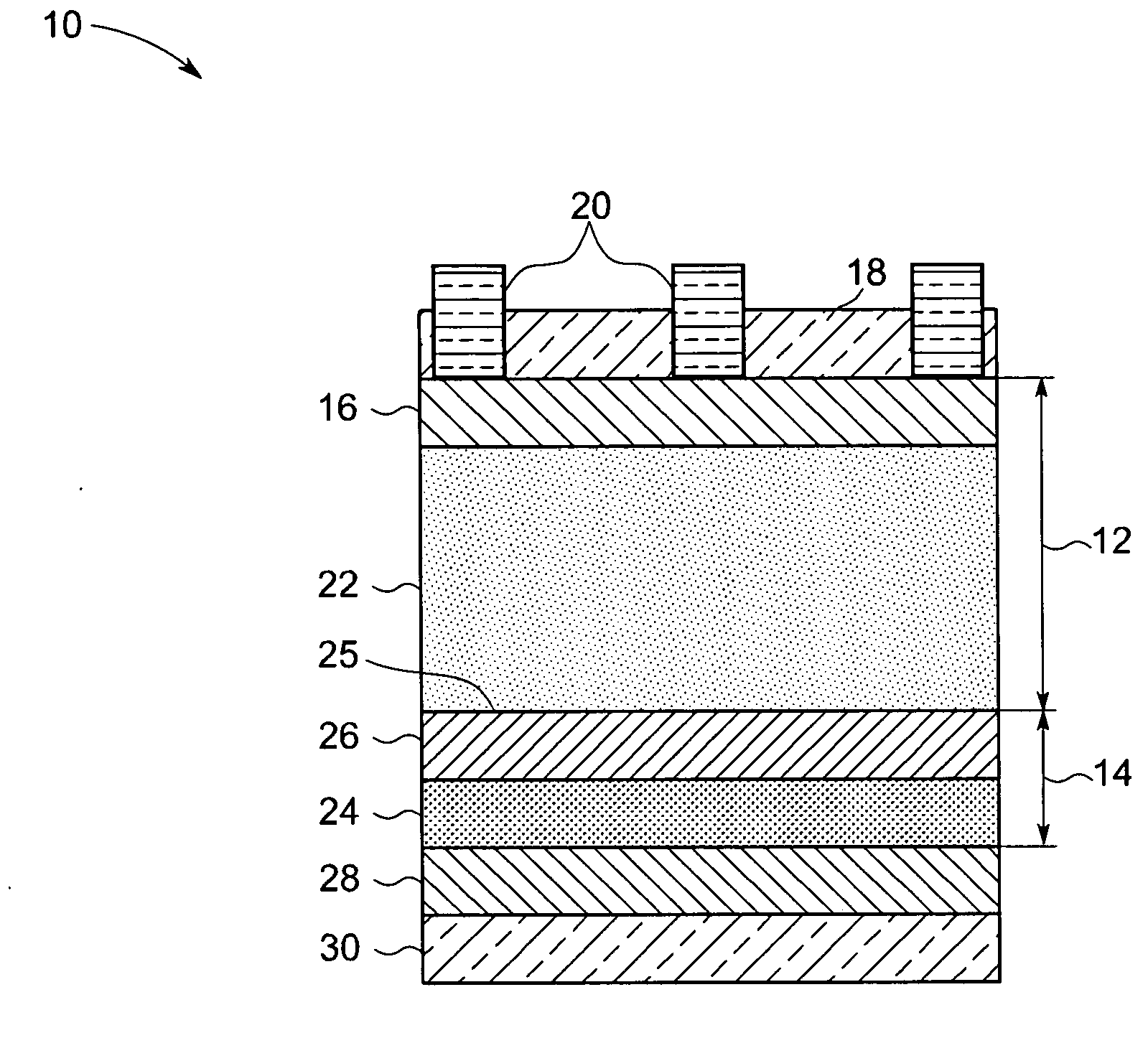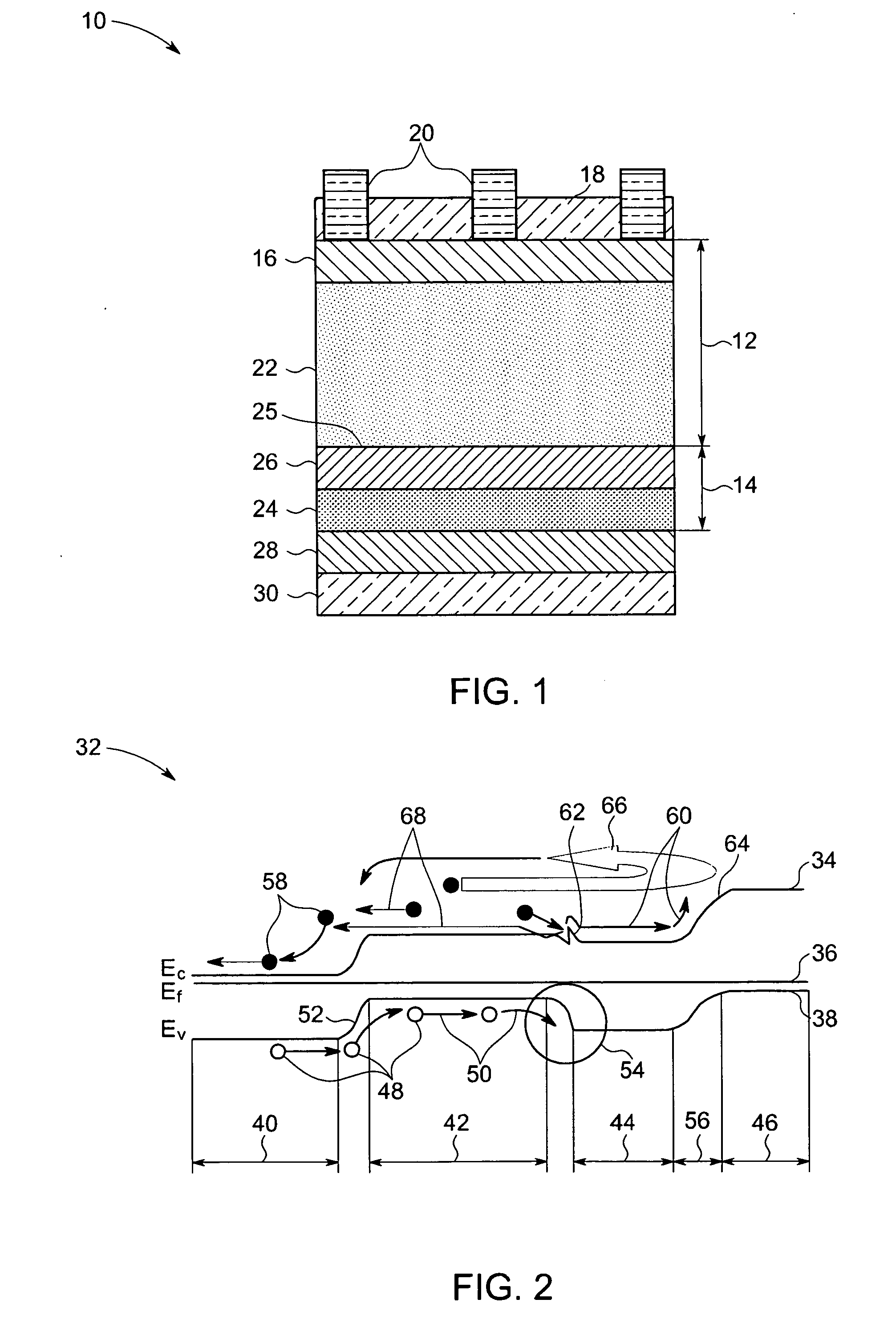Surface passivated photovoltaic devices
a photovoltaic device and surface technology, applied in the field of photovoltaic devices, can solve the problems of significant energy loss, production of such devices may not always provide a viable option to meet all customer demands, etc., and achieve the effect of reducing potential barriers
- Summary
- Abstract
- Description
- Claims
- Application Information
AI Technical Summary
Benefits of technology
Problems solved by technology
Method used
Image
Examples
Embodiment Construction
[0019] Typically, the structure of a photovoltaic device includes a first layer of one doped type and a second layer of the other doped type or a base layer and an emitter layer disposed between two current collection electrodes. As will be appreciated by those skilled in the art, when light is incident on the photovoltaic device, electron-hole pairs are generated which are then pulled across the junction of the layers of two doped types towards respective electrodes and contribute to the electric current produced by the device. In order to increase the efficiency of the device, it is usually desirable to prevent recombination of charge carriers, such as electrons and holes, generated within the device from the photovoltaic reaction, and to enable collection of the charge carriers at respective electrodes. In accordance with certain aspects of the present technique, the carrier generation / transport layer may include a lightly doped crystalline substrate. In certain embodiments, the ...
PUM
 Login to View More
Login to View More Abstract
Description
Claims
Application Information
 Login to View More
Login to View More - R&D
- Intellectual Property
- Life Sciences
- Materials
- Tech Scout
- Unparalleled Data Quality
- Higher Quality Content
- 60% Fewer Hallucinations
Browse by: Latest US Patents, China's latest patents, Technical Efficacy Thesaurus, Application Domain, Technology Topic, Popular Technical Reports.
© 2025 PatSnap. All rights reserved.Legal|Privacy policy|Modern Slavery Act Transparency Statement|Sitemap|About US| Contact US: help@patsnap.com



